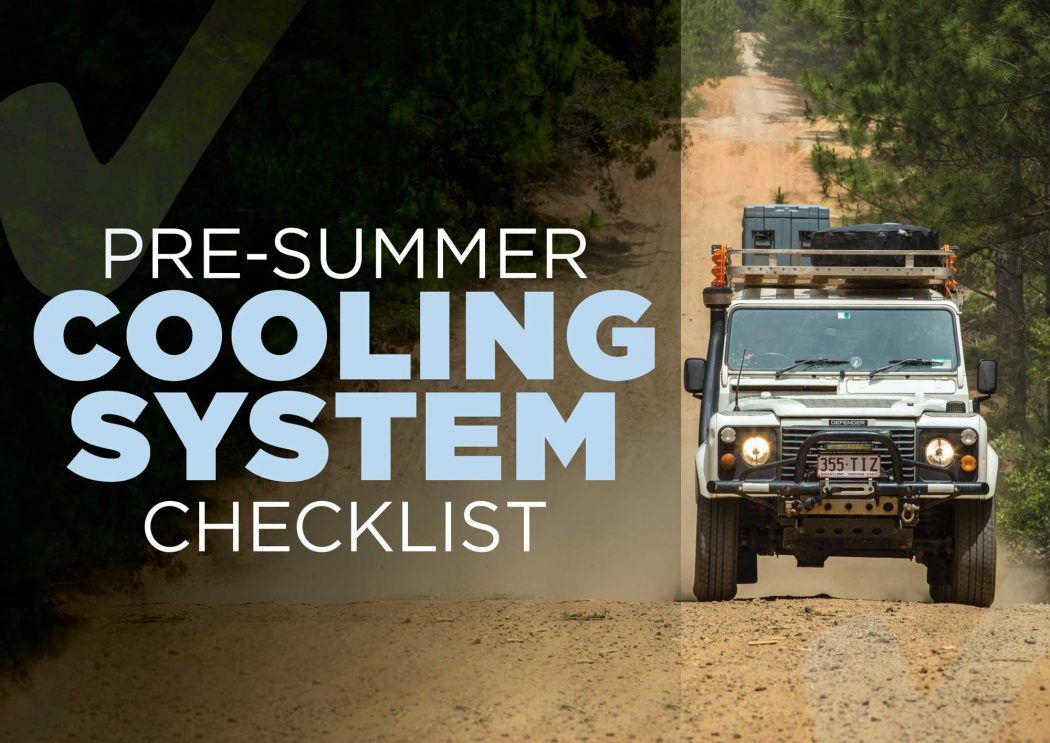Your mates mightn’t think you’re cool, but your 4X4 sure will after following these five simple cooling system tips…
Much like David Bowie and Freddie Mercury were way back in 1981, your cooling system is under pressure. And much like living the lifestyle of two high-flying celebrity musicians, things can (and will) go wrong without a little bit of maintenance from time to time. While the cooling system fitted to your four-wheel drive has an incredibly complex task to handle, the reality is there aren’t too many components involved. With the warmer months fast approaching, here are five areas of your cooling system you should investigate before hitting the tracks. After all, replacing parts in a nice clean workshop is about 16,003 times easier than on the side of the track in 40-degree heat… and I don’t know about you, but I kind of like reaching my destination at the end of the day. I know, crazy right?
COOLANT
Radiator coolant plays a very important part in a cooling system, yet it certainly doesn’t last forever. A good quality coolant will consist of a balance of ethylene or propylene glycol, anti-foaming agents, alkaline balance as well as rust and corrosion inhibitors. Not only does coolant need to have excellent heat transfer properties, it also needs to avoid freezing in colder climates while preventing the build-up of rust and corrosion. Never run tap water in your cooling system (unless it is an emergency); only use distilled water or even rain (tank) water. Your manufacturer will specify when to change the radiator coolant, and it is critical to meet these expectations for engine longevity. So, when was the last time you changed your coolant?
WE’RE FANS OF FANS
One often-overlooked cooling system component is the clutch fan assembly. Another is the actual fan itself. Fans can crack over time, and I don’t need to tell you that a sharp plastic object spinning at 3,000rpm will do damage if it decides to break. Fan clutch assemblies lose tightness – meaning when the engine needs cooling the most, there isn’t enough drive to cool the motor effectively. Some clutch fan assemblies can be rebuilt by adding small bottles viscous fluid to firm up the operation. If you are unable to rebuild the clutch unit, it’s time to dust off the credit card and pick up a new one. My GQ Patrol would always warm up climbing mountains; after replacing the fan and clutch with a new unit, the factory temp gauge now never moves. Basically, if you can spin the fan easily once the engine is warm (and switched off, naturally), it is time to investigate the topic further.
BELTS AND HOSES
This might seem a tad simple, but checking the condition of your belts and hoses regularly could save you thousands in engine repairs. A tiny leak in the cooling hoses can drain enough coolant from the system to overheat an engine before the factory temperature gauge even has time to register. Rubber hoses will harden as they age, so if yours feel brittle it is time to replace them ASAP. It is always a good idea to keep your old ones as spares too. Belts tend to hide abuse better than hoses… the trick here is to bend the belt back on itself and look for any cracking, which is a sure sign it needs to be replaced sooner rather than later. Again, keep these old belts as spares as they could save your bacon.
THERMOSTATS… AND WHY YOU NEED THEM
A cooling system thermostat is an incredibly ingenious and rather reliable mechanical component. Please, for the love of all things sacred, don’t remove the thermostat fitted to your cooling system (as some keyboard warriors on Internet forums will recommend). The thinking from a few decades ago was that if the coolant is flowing faster, it will remain cooler. Rubbish! By running the correctly rated thermostat, coolant will remain in the radiator longer – meaning it will actually have a fighting chance of staying within operating temperatures. The thermostat assists the engine in reaching its critical operating temperature sooner, too. Without one, your engine will run rich (and not in a good way). As a side note: Before fitting your new thermostat in its housing, place it into a pot of boiling water to ensure the new component is in fact operating.
RADIATOR…
My take on radiators, is always buy the best quality and biggest radiator you can fit (and afford). A radiator is composed of a series of cooling tubes that run through the unit, which can block with debris over time. If your radiator is partially blocked, a process known as ‘rodding’ can solve this. Basically, the radiator end tanks are removed and a long sword-like device is pushed through all the tubes to clear them out. If your radiator is looking older than the Queen, it could be more cost-effective to replace it. Now, I’m a fan of brass/copper radiators as they are far simpler to repair in the bush. If you must be lured into a blinged-up alloy radiator… if it sounds too cheap then it is too cheap.


